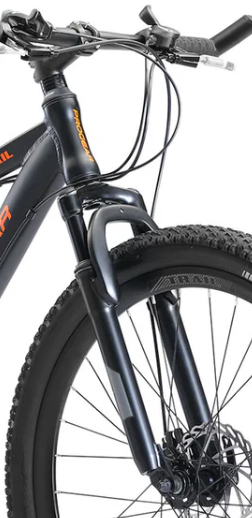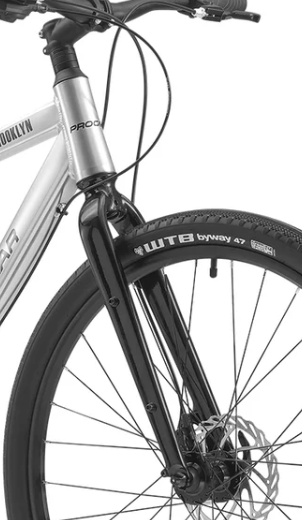Suspension Vs Rigid ForkUpdated 5 months ago
Suspension and rigid forks are two different types of front-end configurations on bicycles, each offering unique benefits suited to specific riding styles and conditions.
Fork Suspension | Rigid Fork |
 |  |
Fork suspension features shock absorbers built into the front fork, which help to cushion the impact of bumps, roots, rocks, and other obstacles encountered on rough terrain. This type of suspension enhances comfort and control by absorbing shocks and vibrations, making it an ideal choice for mountain biking, trail riding, and other off-road adventures. The added stability and improved traction provided by fork suspension allow riders to maintain better contact with the ground, thus improving handling and reducing fatigue on longer rides. However, the complexity of suspension forks means they are typically heavier and require more maintenance compared to rigid forks.
Rigid forks, on the other hand, have no moving parts and provide a direct, solid connection between the front wheel and the frame of the bicycle. This simplicity makes rigid forks lighter and more durable, with less need for maintenance. They are well-suited for road biking, commuting, and recreational riding on smooth, paved surfaces where the need for shock absorption is minimal. The rigidity of the fork offers a more responsive feel, allowing for precise steering and efficient power transfer from the rider to the wheels. Additionally, rigid forks are often preferred for touring bikes due to their ability to carry heavy loads without the added complexity of suspension.
In summary, the choice between fork suspension and rigid forks depends on the intended use of the bicycle. Fork suspension is beneficial for off-road and rough terrain riding, providing comfort and control, while rigid forks are ideal for smooth surface riding, offering simplicity, light weight, and precise handling.